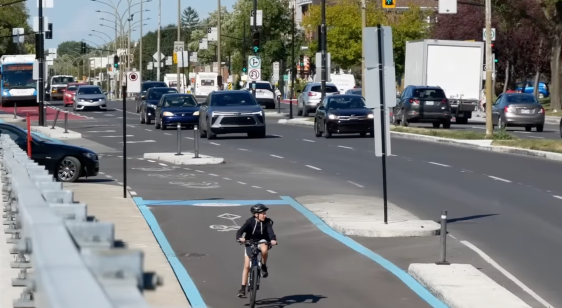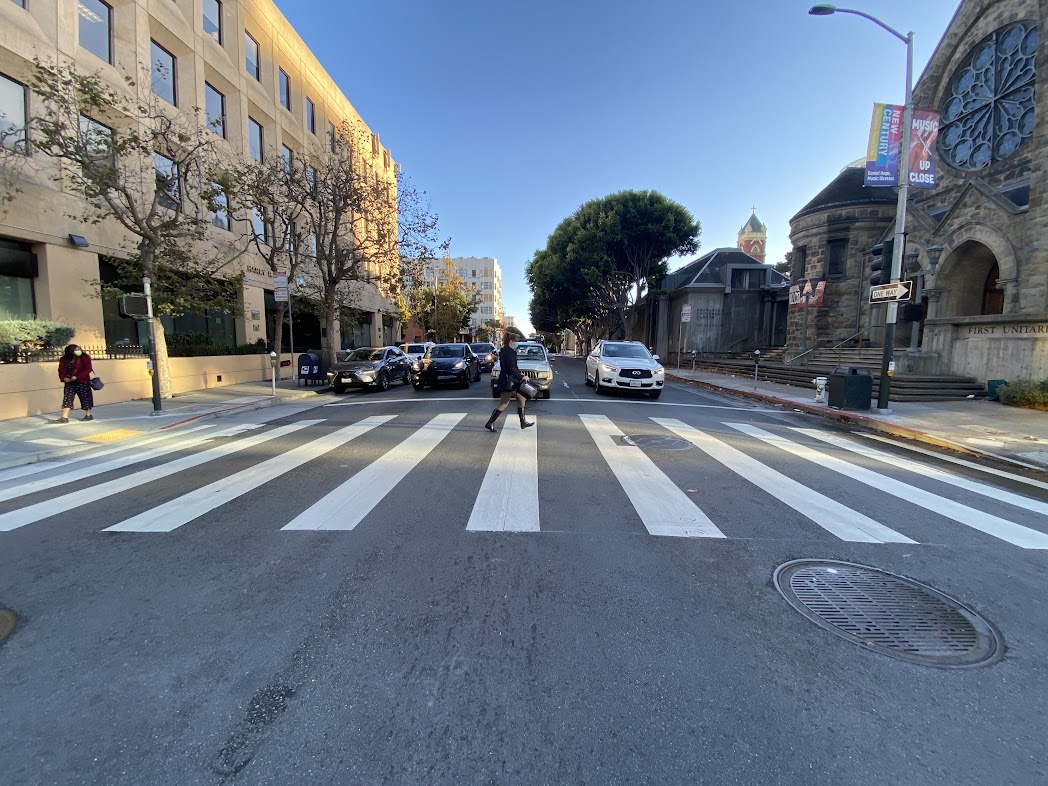Today on the Streetsblog Network, we're thinking about parking, thanks to a post from The Overhead Wire on the devastating effect that parking structures and highways can have on a city's infrastructure:
More! That's the scream of merchants and others who believe that adowntown without an endless sea of parking is not worth going to. Butonce the whole downtown turns into a parking lot it's not really worthmuch anymore, is it? Yet we still see the discussion of parking dominatewithout an eye for the destruction that it can cause a downtown if leftunfettered.
To
illustrate, The Overhead Wire's Jeff Wood uses two aerial views of
Hartford, Connecticut, pre- and post-interstate (the views were part of
a presentation by Dr. Norman Garrick of the University of Connecticut at a recent Congress for the New Urbanism transportation summit).
And yet, as Urban Cincy wrote
earlier this week, cities like Cincinnati are continuing the cycle. By
underfunding transit systems, they make it impossible to get to
downtown without a personal automobile -- and create a situation that
demands ever more productive municipal space be sacrificed to parking:
Metro, the non-profit that operates Cincinnati’s bus system, is facing a budget deficit of $16 millionin 2010. To preempt this crisis, officials in December elected toreduce service on virtually every route, and eliminate some routesentirely (new schedules).…
Metro's important role in Cincinnati goes beyond the obvious. For example, there simply is not enough parking downtown to eliminate bus service. If Cincinnati were to eliminate Metro entirely, the city would need 127 acres of additional parking.
According to Carter Dawson, the group that is managing The Banks development on the riverfront, 85,000 people work in downtown Cincinnati, and according to Metro,20 percent of them commute using the bus. Therefore, 17,000 people rideto bus downtown to work each day. The amount of space needed for eachparking space is estimated at 325 square feetafter factoring in space needed for access lanes. As a result,Cincinnati would need to add more than 5.5 million square feet ofadditional parking space, or about 127 acres.
Cincinnatisimply cannot afford to throw away 127 acres of prime real estate. Notonly does downtown hold some of the region’s most lucrative businessesthat would have to go elsewhere, but the tax revenue lost by thisdisplacement would be catastrophic as well. In addition, roadways wouldneed to be expanded to accommodate the increased traffic, stealing evenmore valuable downtown space. Residents would also be displaced, takingwith them the income tax revenue on which the city relies. Cincinnaticannot afford to eliminate Metro.
More from around the network: Rebuilding Place in the Urban Space on the long-term need to plan for transit "crush loads." Cyclosity on Baltimore's utter failure to clear its bike paths after the snowstorms. And Tulsa Transportation Examiner on how a Texas town banned bikes because they can't maintain their roads.





